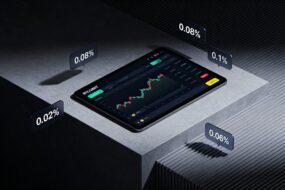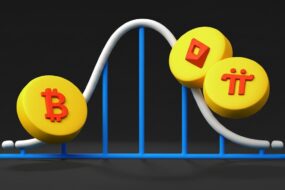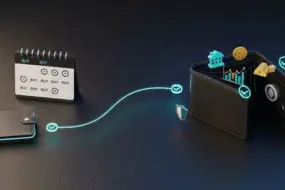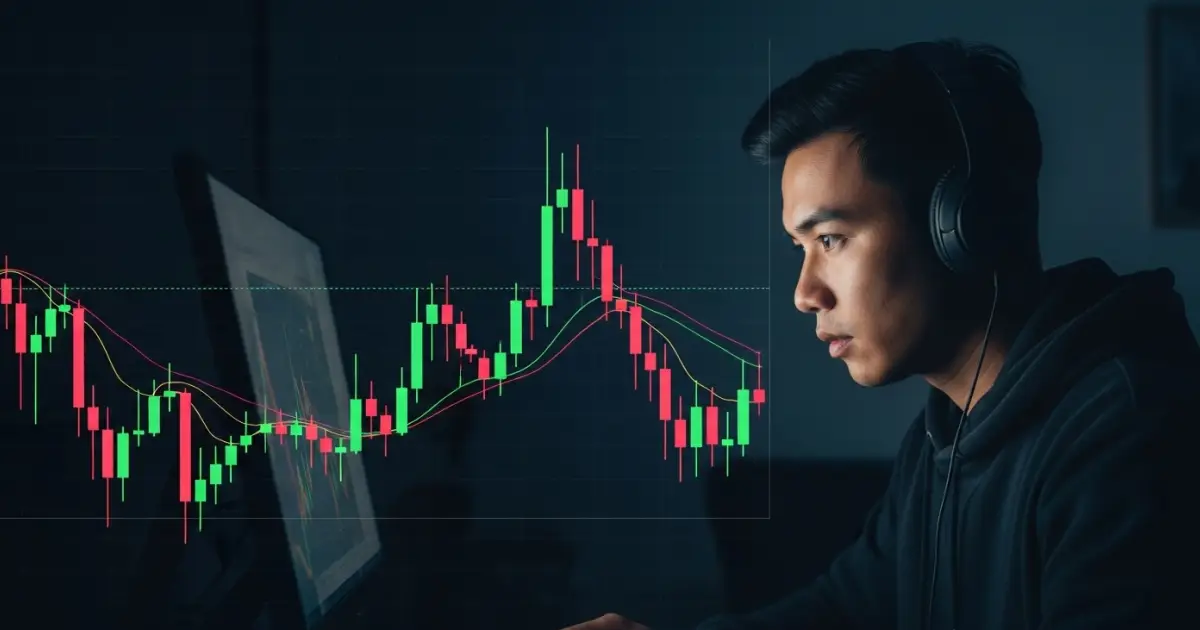
Bitcoin is no longer a fringe asset. In 2025, it is a fully integrated financial instrument across traditional and crypto-native markets. With that evolution comes complexity and opportunity. Whether you’re trading BTC on spot or using margin on futures platforms like Bitunix, having the right trading strategy makes all the difference.
Bitcoin trading is now widely recognized as a form of investing, with both short-term trading and long-term investing strategies being common approaches for building wealth and managing risk in the Bitcoin market.
This article explores the most effective Bitcoin trading strategies that top traders are using in today’s fast-paced markets. From momentum scalping to margin swing trades, we break down what works, how to manage risk, and how Bitunix users can implement these tactics directly on the platform.
Why Bitcoin Trading Has Changed in 2025

In previous years, Bitcoin trading was defined by volatility and hype cycles. In 2025, those elements remain—but they are shaped by new realities:
- Institutional inflows bring more liquidity but also tighter competition. Investors now face a more sophisticated market and must adapt their strategies accordingly.
- AI tools and automated bots create more efficient markets
- Bitcoin futures and margin products are widely used across exchanges
- Global macro events like rate decisions or ETF launches move BTC faster than ever
For traders, this means one thing: you must evolve your strategy or risk being left behind. While short-term trading remains popular, long-term investments also require new tactics in 2025 as both approaches are impacted by these changes.
Day Trading Strategies for Bitcoin in 2025

Day trading involves opening and closing positions within the same day. The goal is to profit from short-term price movements, often using technical indicators and quick decision-making. However, most people may find it harder to succeed without adapting to these changes.
What’s Working:
Day trading involves rapid buy and sell decisions to capitalize on short-term price movements. Before engaging in day trading, it’s wise to practice with demo accounts or small positions to gain experience and improve your decision-making and risk management skills. For new traders, the process often starts when they buy cryptocurrencies on reputable platforms, ensuring a secure entry into the market.
- Scalp Trading on High Volume Breakouts: Bitunix users often trade BTC/USDT breakouts with high leverage (3x–10x), entering just above resistance and exiting on quick surges. This strategy targets small changes in prices for quick profits.
- RSI Divergence on 15-Minute Charts: Detecting hidden bullish or bearish divergence with Relative Strength Index is still a go-to signal.
- Volume Profile + VWAP Strategies: Many pro traders now combine Volume Weighted Average Price with historical volume ranges to find smart entry points.
Some traders also apply these techniques to stocks and trade options for diversification, taking advantage of liquidity and volatility across different asset classes.
Risk Tips:
- Always use isolated margin to limit losses
- Avoid overtrading during major economic news releases
- Use Bitunix’s SL/TP function to protect capital in volatile conditions
Swing Trading Bitcoin with Margin

Swing trading involves holding trades for days or weeks to capture medium-term trends. With Bitunix margin trading, you can increase your position size without locking up capital.
What’s Working:
- Channel Trading: Identifying parallel price channels on the 4-hour and daily charts helps traders purchase securities, such as Bitcoin, near support and sell near resistance. Selecting the right security for this strategy is crucial to maximize returns.
- News Catalyst Trading: Events like ETF approvals, macro reports, or major partnerships are ideal for initiating swing trades. Traders often purchase securities in response to these catalysts, aiming to capitalize on price movements by choosing the appropriate security for the news event.
- Trend-Following Indicators: Traders often use moving average crossovers (50-EMA over 200-EMA) to confirm entry direction.
Margin Trading Advantages:
- Control a larger position with less upfront capital: Margin trading allows you to control a larger position using borrowed money from your broker. Your holdings act as collateral for the borrowed funds, and fluctuations in the value of this collateral can trigger a margin call. Interest is charged on the borrowed money, and the interest rate may vary depending on your broker and market conditions. If a margin call is not met, a forced sale of your assets may occur to cover losses. In contrast, a cash account requires full payment for securities purchases and does not allow borrowing, reducing the risk of margin calls and forced sales.
- Hedge spot holdings by shorting with futures
- Use trailing stops to lock in profits as trend develops
What’s Working:
- 1-Minute Scalps Using Order Book Signals: Bitunix provides live depth-of-market and order flow data to track whale movements. High-leverage scalping requires strict rules to manage risk effectively, as even small price moves can lead to significant losses.
- Liquidity Grab Strategies: Traders fade large candle wicks that trap emotional buyers and sellers. Brokers often set specific leverage limits and margin requirements for high-leverage trades, so scalpers must be aware of these trading costs and restrictions.
- Bollinger Band Breakout + SL Placement: Scalpers often set stops just outside the band after a squeeze breakout.
Caution:
- Set max risk per trade (usually 1–2 percent of capital)
- Never trade without SL on high leverage
- Trade in active sessions (London/New York overlap)
High-Leverage Scalping with Strict Risk Rules
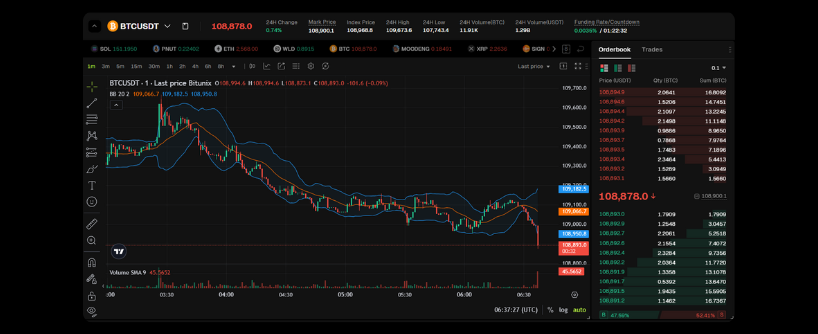
High-leverage trading (20x–50x) is high-risk and not for everyone, but when used with discipline, it can be a powerful method for extracting profits from micro-moves in BTC price.
What’s Working:
- 1-Minute Scalps Using Order Book Signals: Bitunix provides live order flow and depth-of-market data to identify whale activity and momentum.
- Liquidity Grab Strategies: Fading large wicks that trap undisciplined traders on breakouts or breakdowns.
- Bollinger Band Breakout + SL Placement: Scalpers set tight stops outside bands after a squeeze for controlled risk.
Caution:
- Limit risk per trade to 1–2% of capital.
- Always use stop-loss on high leverage.
- Trade only during the most liquid sessions (London/New York overlap).
Bitcoin Margin Trading for Breakout Entries

Margin trading allows users to borrow funds to increase position size. On Bitunix, traders access up to 125x leverage for BTC futures. Used properly, margin enhances profitability without increasing exposure unnecessarily.
Best Practices:
- Predefine Entry + Exit Criteria: Use tools like K-Line Ultra to plan trades before execution
- Adjust Leverage Per Setup: Use 2x–3x for wide range trades, up to 10x for short-term catalysts
- Use TP and SL: All margin trades should have targets defined at entry. Bitunix provides comprehensive brokerage services to support margin trading, including access to high leverage and advanced order types. Bitunix supports SL/TP at order placement
Strategy:
Combine margin with breakout trades to trade cryptocurrencies following news events or technical formations like triangles, flags, and head-and-shoulders, amplifying both potential gains and risks. Confirm volume before entry.
Successful breakout trades using margin can significantly increase a trader’s revenue.
Quant-Inspired Pattern Trading

Advanced traders are now using partial automation and pattern recognition to gain an edge.
What’s Working:
- Backtested Pattern Triggers: Many Bitunix users journal successful candlestick setups (like 2-bar reversals or engulfing patterns) and deploy them repeatedly
- Mean Reversion on Over-Extended RSI: When BTC shows extreme RSI, traders short or long the reversion to mean
- Candle Clustering on Key Levels: Multiple rejections at a level often signal exhaustion or breakout—used effectively in BTC range markets
Example Trading Scenarios: How Pros Are Winning in 2025
To see how top traders are capitalizing on the 2025 market, let’s look at a few real-world scenarios:
- Bitcoin Trading on a Cryptocurrency Exchange: A trader spots a bullish technical analysis pattern and places a market order to buy Bitcoin as the price rises. After a strong move upward, they use a limit order to sell and lock in profits, carefully managing trading costs and considering the tax implications of their gains.
- Options Trading for Leverage: Another trader uses a trading strategy focused on options, purchasing call options on a stock with a low market cap. When the price rises as anticipated, they exercise the options and sell the underlying stock, generating a profit while keeping an eye on trading fees and potential tax liabilities.
- Day Trading with Technical Analysis: A day trader identifies a momentum opportunity in the stock market using technical analysis. They buy shares with a market order and, as the price climbs within just a few minutes, sell using a limit order to secure their profits. Throughout, they monitor trading costs and adjust their position size to manage risk.
In each example, the trader combines smart trading strategies, technical analysis, and disciplined risk management to maximize returns. By understanding the impact of trading costs and tax implications, they ensure that their profits are optimized and their investment goals remain on track.
Tools on Bitunix That Help Execute These Strategies
Bitunix offers several features that pro traders rely on to implement the above strategies:
- K-Line Ultra: View real-time advanced charts and execute directly
- SL/TP at Entry: Manage risk without needing to monitor every second
- Adjustable Leverage: Change leverage during open positions
- Mobile/Desktop Parity: Trade anytime, anywhere with full functionality
- Trade History Logs: Review win rate, slippage, and trade behavior
- Copy Trading Module: Follow top traders and mirror their strategies
Risk Management: The One Strategy That Always Works
All strategies above fail without risk control. Traders on Bitunix who succeed long-term tend to follow a strict playbook:
- Never risk more than 2 percent of capital per trade
- Use trailing stops after reaching 50 percent of target
- Avoid revenge trading after a loss
- Have a daily loss limit and stop trading when it’s hit
Use Bitunix’s isolated margin and SL/TP setup features to structure each trade properly. A good trade is one where the risk is predefined even before profits are made.
FAQs
What’s the best Bitcoin trading strategy for 2025?
There’s no universal “best,” but combining swing trading with strong risk controls is working well for many traders in 2025.
Is day trading Bitcoin still profitable?
Yes, especially with the volatility BTC offers. But it requires fast execution, a structured plan, and clear emotional control.
Can beginners use margin trading?
Yes, but start small. Platforms like Bitunix allow low-leverage margin trading with safety features like isolated margin and fixed SL orders. If margin requirements are not met, assets in your account may be sold to cover losses.
How much capital do I need to start?
You can begin trading with as little as 50 to 100 USDT. The key is position sizing and discipline, not large capital.
Does Bitunix offer tools to help with these strategies?
Absolutely. Bitunix supports all mentioned tools: SL/TP at entry, leverage controls, mobile parity, and detailed trade tracking for refinement.
Can I trade penny stocks with margin on Bitunix?
No, penny stocks are generally not marginable due to their high risk. These low-priced securities are often traded over-the-counter and are subject to strict regulatory considerations, making them unsuitable for margin trading on most platforms.
Disclaimer: Trading digital assets involves risk and may result in the loss of capital. Always do your own research. Terms, conditions, and regional restrictions may apply.




